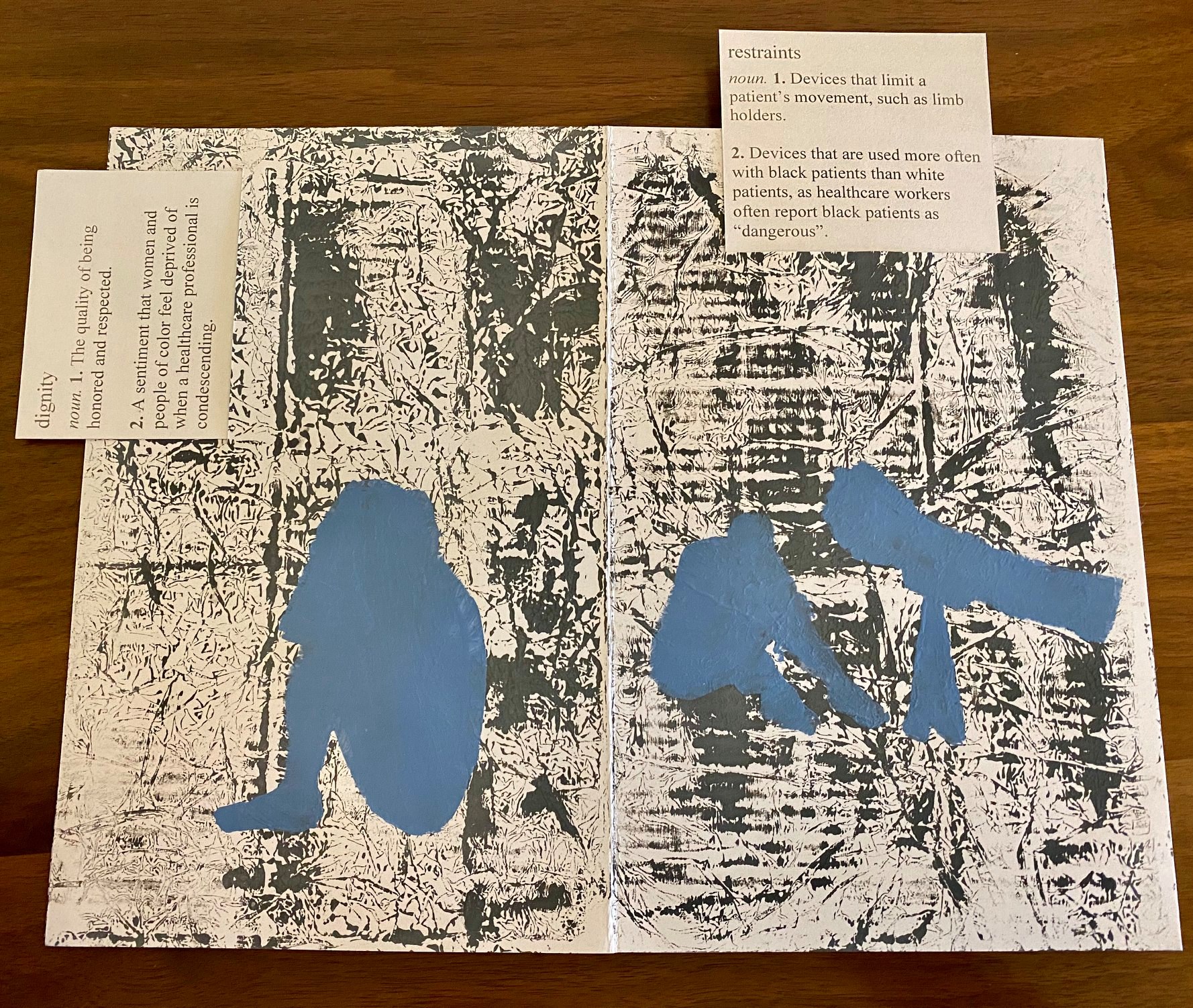
Classroom Spotlight
Zines, Artists’ Books, and Experimental Printmaking
Scripps College, Summer 2020
Professor Tia Blassingame
Student: Eliza Kornfeld
 A Healthcare Dictionary: The Experiences of Women and People of Color
A Healthcare Dictionary: The Experiences of Women and People of Color
With tin foil collagraphs and pochoir printing, Scripps College student Eliza Kornfeld supplements dictionary definitions of healthcare-related terms to create a fuller picture of treatment inequities in the medical field.
From the colophon: “The artist plans to attend medical school and believes that the first step to solving some of the problems in the healthcare system is to educate the general public on these issues.The text is meant to contrast the traditional definition of a word with a second definition depicting the experiences of marginalized patients.”
1. Was there anything you can mention about what was said by the artists and curators with whom you met and what they showed you that inspired you or contributed in some way to your book?
In our last studio visit, we explored the different mechanisms of pop ups and how they are often used to tell a story or bring a book to life. Pop ups usually have a playful connotation, so I wanted to see if I could convey a more serious tone with pull tabs in my artist book. The studio visit inspired me to play around with some of the mechanisms of pop ups, which led me to create the pull tabs that reveal a second definition to each term in my book.
2. Can you say anything about the subject of your book? What led you to that subject? If this was what was on your mind (even obsessing you), did the concept of a book, its possible structure, etc., lead you in any way to exploring it?
I knew for a long time that I wanted to make my artist book about some of the injustices that are present in the United States healthcare system. As an aspiring physician, I feel as though it will be my responsibility to help correct this broken system from the inside. I am currently a research assistant at my local hospital, and I have also spent time volunteering in the healthcare field. So, for my artist book, I pulled inspiration from conversations I’ve overheard or interactions I’ve observed from my time spent working and volunteering in hospitals. Once I knew what I wanted to include in the book, I found myself going down an internet rabbit hole as I read about the patient experiences of women and people of color and discovered staggering statistics about gender and race gaps in healthcare. The creation process of my artist book inspired me to further educate myself on the injustices in healthcare in order to become a better ally and, in the future, a better doctor.




